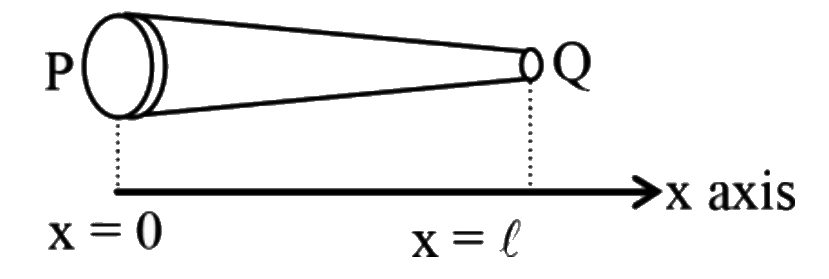A potential difference (V) is applied across a length of thickness d. if a wire of length of the wire is doubled, the drift velocity
becomes zero
becomes double
becomes half
emains same
The correct Answer is:C
Similar Questions
A wire of length l tapers uniformly from end P to end Q with the diameter at P twice that at Q. A potential difference is applied across the ends of the wire. Which graph represents the variation of the drift velocity V of the conduction electrons with distance x?

View SolutionA wire of length l tapers uniformly from end P to end Q with the diameter at P twice that at Q. A potential difference is applied across the ends of the wire. Which graph represents the variation of the drift velocity V of the conduction electrons with distance x?

View Solution
Knowledge Check
A potential difference (V) is applied across a length 7 of thickness d. if a wire of length of the wire is doubled, the drift velocity
Abecomes zeroBbecomes doubleCbecomes halfDremains sameA potential difference (V) is applied across a wire of thickness d and length I. If thickness is doubled the drift velocity
Abecomes doubleBbecoines haltCremains sameDbecomes zeroA potential difference V is applied across a wire of length I and thickness d. If value of V is doubled, the drift velocity
Abecomes zeroBbecomes halfCbecomes doubleDremains same
A potential difference Vis applied across a wire of length I and thickness d. If value of Vis doubled, the drift velocity
View SolutionA potential difference is applied across the ends of a metallic wire. If the potential difference is doubled, the drift velocity will
View SolutionA potential difference V is applied across a coper
wire of diameter d and length l. When d is doubled,
the drift velocity:-
View SolutionA potential difference V is applied to a copper wire of length I and diameter d. If V is doubled, then the drift velocity
View SolutionA potential difference of Vis applied at the ends of a copper wire of length I and diameter d. On doubling only d, drift velocity
View Solution
